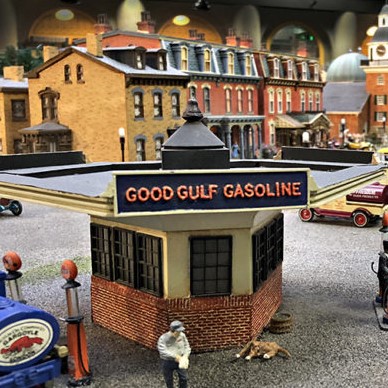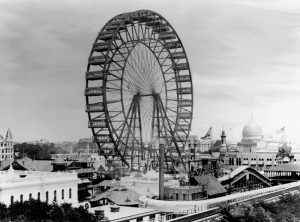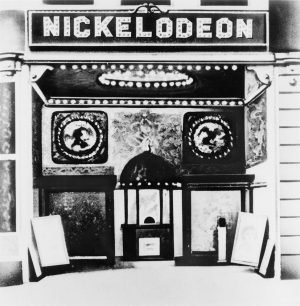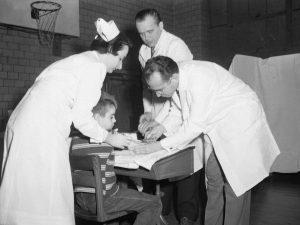Pioneered in Pittsburgh
The Steel City’s claims to fame range from the breakthrough to the bizarre.

For a small city, Pittsburgh has a long and storied history. 268 years ago, George Washington observed that the meeting of the Allegheny and Monongahela would be an ideal location for “absolute command of both rivers.” Decades later, the Ohio River became invaluable for westward settlement, and Pittsburgh grew prosperous because of its access to these rivers.
Beyond being the home of legendary sports teams and a former steel mecca, Pittsburgh has also made a name for itself in both serious and strange ways. Racing pierogies, more bridges than Venice, and a memorable accent are just a few of the city’s off-beat claims to fame. But Pittsburgh has a long tradition of innovation, and the city is recognized for ideas that are internationally important as well as those that are eccentric.
Pittsburgh is the birthplace of some ideas that are used today all over the world. Through the tireless efforts of pioneers in a variety of fields, the inventions Pittsburghers created have gained national prominence… though it is debatable if anything beats the revolutionary idea of putting french fries on sandwiches.
First Bingo Game
Pittsburgh is not definitely credited as being home to the true beginning of Bingo, but the game traces its heritage back to the Steel City. Hugh J. Ward introduced Bingo at carnivals around the Pittsburgh area in the early 1920s and also published a rule book. Originally called “Beano” because of the markers it used, today Bingo is played all over the world. However, its first widespread popularity began after it was standardized in Western Pennsylvania.
First Gas Station
Although it is something we take for granted today, the world’s first drive-in gas station was of the highest modernity when it opened near Oakland in 1913. Before drive-in gas stations, gas was purchased from a general store, but this Gulf station introduced the novel drive-up canopy design that is the trademark of gas stations today. At 27 cents a gallon, the price of gas in 1913 was actually about $7.50 in today’s money due to it being a more precious resource at the time.

First World Series
In 1903, the Boston Americans played the Pittsburgh Pirates in the first World Series. While half of the games were held in Boston, the second half took place at Pittsburgh’s Exposition Park on what is now known as the North Side. With the help of pitcher Cy Young, Boston would win five out of the eight games. The ‘03 Series included notable Pirate Honus Wagner, but Pittsburgh only won three games, including a single home victory.
First Ferris Wheel
The first modern Ferris wheel was not located in Pittsburgh, but it was invented by a man from Pittsburgh. The 1893 World’s Columbian Exposition in Chicago was looking for a star attraction to rival the Eiffel Tower (also built for a World’s Fair), and a 264 feet tall observation wheel certainly fit the bill. The man behind this engineering feat, George Ferris, was an accomplished Pittsburgh bridge builder. Ferris’ wheel was huge, and each car was able to hold 60 people. After the fair closed, the wheel was eventually scrapped, but it has become one of the world’s most common amusement rides. Besides a state historical marker, Pittsburgh currently lacks a wheel of its own to pay tribute to the Ferris wheel’s inventor.

First Professional Football Game
Another notable event in Pittsburgh sports history was the nation’s first professional football game, which occurred in 1892. Baseball had paid players as far back as the 1860s, but this game was the first time football players were paid to play in a professional setting. Pitting the local Allegheny Athletic Club (AAC) against the Pittsburgh Athletic Club, the game was held at Recreation Park on the modern-day North Side. William Heffelfinger – a renowned Yale athlete – was paid $500 to play for the AAC – ten times the cost of the field rental! In the end, Heffelfinger would score the winning touchdown for the AAC, concluding the first game of what has become a multi-billion-dollar industry.
First Movie Theater
The first movie theater ever built was in downtown Pittsburgh on Smithfield Street. Called a Nickelodeon after the five-cent ticket price, the theater hosted 450 people on its first day in 1905. At around 15 minutes, the films were shorter than they are today, and they were viewed as a mere novelty at the time. The theater was a huge success; its inventor opened a dozen in Pittsburgh within months, and in two years, 8,000 Nickelodeons dotted the country. Demolished about 5 years later, the Nickelodeon on Smithfield Street is the nearly-forgotten template that the entire film industry has followed.

First Radio Station
The world’s first commercial radio station, KDKA, debuted in Pittsburgh in 1920. Broadcasting the results of the Warren Harding presidential win, KDKA was financed by Westinghouse, a leading radio manufacturer, who thought radios would be more likely to sell if regular programming was offered. Previously, radio had just been used for one-to-one communications, and KDKA was the first of nearly 600 commercial stations that would spring up over the next four years. Today, many KDKA listeners are likely unaware that the station brought radio into the communication mainstream.
First Emoticon 🙂
The first documented emoticon was invented in 1982 by Scott Fahlman, a Carnegie Mellon University Computer Scientist. People had likely created pictures with text before, but Fahlman was the first to directly suggest using a “:-)” symbol to clarify a message as being satirical. Spreading like wildfire, Fahlman’s simple solution has evolved into an entire universe of emoticons and emojis, symbols that have all become internet shorthand today.
First Polio Vaccine
Jonas Salk’s discovery of the polio vaccine, approved in 1955, was revolutionary. It was recently in the news during the race to develop a Covid-19 vaccine. With a death toll of more than 3,000 in 1952, the polio vaccine was key in stopping the spread of the paralysis-causing disease. Polio epidemics were common throughout the early 20th century, and children were the most heavily affected. A setback caused by a group of defective vaccines slowed the widespread adoption of the vaccine, but today, there is an insignificant number of polio cases each year.

Many of these inventions and events were considered unusual at the time they were introduced, but they have all made lasting contributions to the history of Pittsburgh and even the rest of the world. Although these innovations have given the city several claims to fame, most people don’t give a second thought as to where they originated. So next time you turn on the radio, ride a Ferris wheel, or attend a movie, think of the Pittsburgh pioneers who made them realities.

Years after editing and delivering the Carson Middle newspaper by himself, Andrew McLaughlin is excited to be Co-Editor-in-Chief of The Uproar. Always a fan of amusement park history, he has written for the magazine of the National Amusement Park Historical Association. He also volunteers at the Depreciation Lands Museum, a local living history museum. Andrew welcomes comments about his writing.
